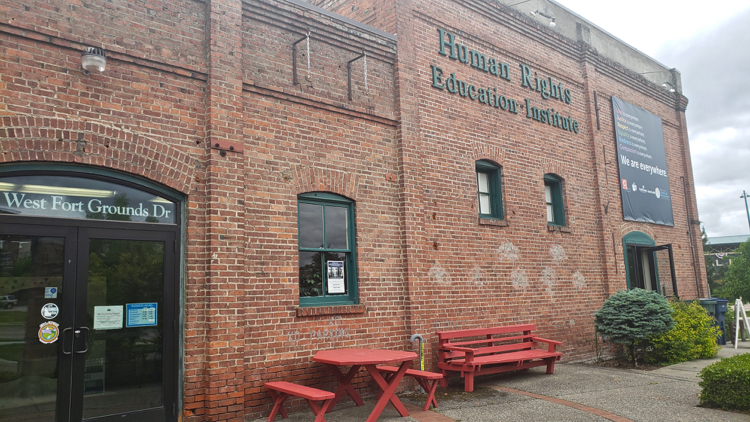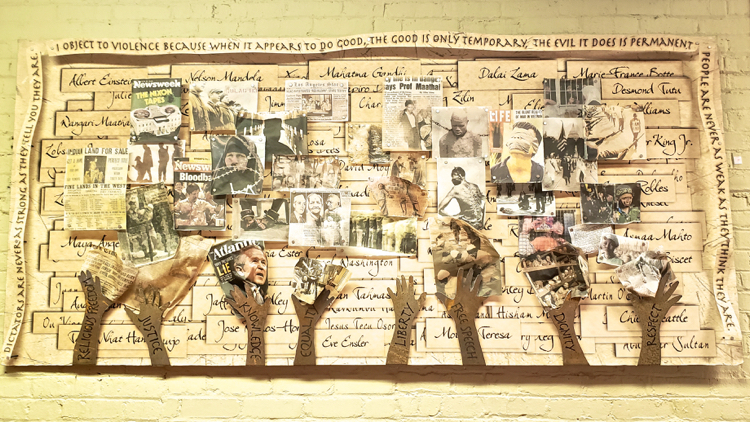
Once again, travel gives me hope.
I am frequently saddened and discouraged by the harm that people so freely do to others. I am baffled by the presumption that one way of living is the only way to live, and that those who hold such opinions feel it is their right to impose them, sometimes with hate and abuse, on others.
In my travels I have also seen the opposite at play. I have seen communities and governments take stands against discrimination, oppression, and hate. This is most evident in societies that have faced great atrocities.
These efforts give me hope.
Each of the museums mentioned in the following posts (not a typical focus of mine as I travel) make a concerted effort to educate and issue warnings about how societies suffer under hate.
- The Canadian Human Rights Museum Is a Must
- Contemplating History in Nuremberg
- Design Museum Den Bosch and an Exhibit on Design in the Third Reich
And, now, there is this post on Coeur d'Alene, Idaho and the Human Rights Education Institute. But the Institute's work is quite different.

Coeur d'Alene, Idaho, and Human Rights
The difference between the museums mentioned in the posts above and the Human Rights Education Institute in Coeurs d'Alene is that the museums were revealing history and warning about what could happen, while the Institute is dealing in the present.
Coeur d'Alene and Idaho in general have a complicated history with Aryan Nations and subversive militias. According to the Southern Poverty Law Center, there are currently six hate groups operating in the state. In 2000, the same organization won a $6.3 million judgment against Aryan Nations. This bankrupted Richard Butler, the leader of the Idaho-based organization. The location of its compound was eventually bought by philanthropist, Greg Carr, and, after almost 10 years of leaving the land alone, it was turned into a Peace Park.
But this does not mean that racist, anti-Semitic, anti-LGBTQ, and other hate-focused activities have been put to rest. According to one local, the state is attracting those who hold extreme right-wing positions while also distressing moderate locals, some of whom have chosen to leave. In fact, as I was writing this on June 11th, 31 people were arrested in Coeur d'Alene before they managed to riot downtown at the same time as the city's Pride event was taking place. Those arrested came from at least 11 states.
This kind of situation makes the work of the Human Rights Education Institute all the more challenging and, in my opinion, all the more deserving of respect. According to their website, “The Human Rights Education Institute offers proactive education programs that teach human rights, acceptance, respect for diversity, and cultural humility. Our programs, activities, and events seek to reduce racial prejudice and increase understanding in our community.”
In speaking with the executive director, I learned that beyond programs, the majority of their work is spent forging dialogue between contrary groups. Having some knowledge of Idaho's history, my visit to the Institute encouraged me and reinforced how travel gives me hope.


Love Lives Here: Travel Gives Me Hope
Outside the Human Rights Education Institute is a sign: Love Lives Here #LOVELIVESHERECDA. I had to check what the letters “cda” on the sign stood for. It was Coeur d'Alene.
From this website, “We are here to raise community awareness around hate group organizations infiltrating our local area and spreading discriminatory messaging. By educating our business community, and our community at large, about these groups and giving our community the tools needed to report any incidents, we hope to build a culture of inclusivity and safety to strengthen our economy and overall reputation. We aim to share a message of positivity with the world.”
While the Institute works in the education system, it collaborates with groups like Love Lives Here to bring the message and tools of inclusivity to the entire community.

What to See and Do in Coeur d'Alene
The coureurs de bois, French trappers and traders, gave the name Coeur d'Alene to the Indigenous people in the Idaho area. Coeur means heart. Alene means awl. Together the name means Heart of Awl, referring to the naturally sharp trading skills of the Indigenous people.
More to see and do in Coeur d'Alene:
- Lake Coeur d'Alene is one of the largest lakes in the state.
- McEuen Park is a large public space for walking, cycling, and events.
- Take a cruise on Lake Coeur d'Alene for a scenic view, Sunday brunch, or sunset dinners.
- Tubbs Hill has a hiking trail accessed from McEuen Park. It is an excellent place to watch a sunset.
- Shop Sherman Avenue. In 2016, the American Planning Association designated Sherman Avenue (the main street) as a “Great Street”.
- Museum of North Idaho provides a history of the area.
